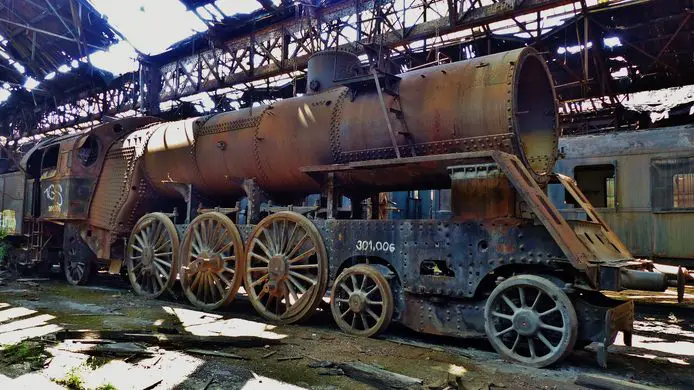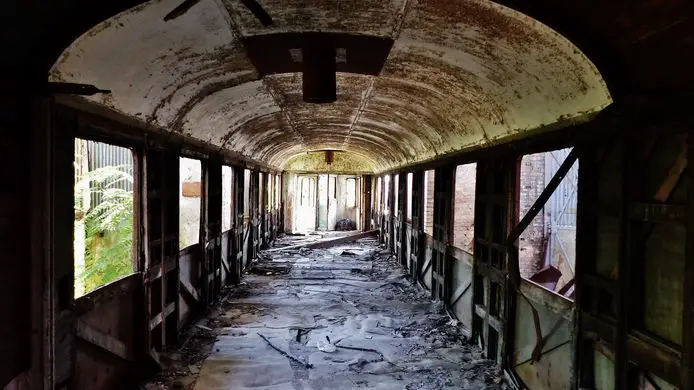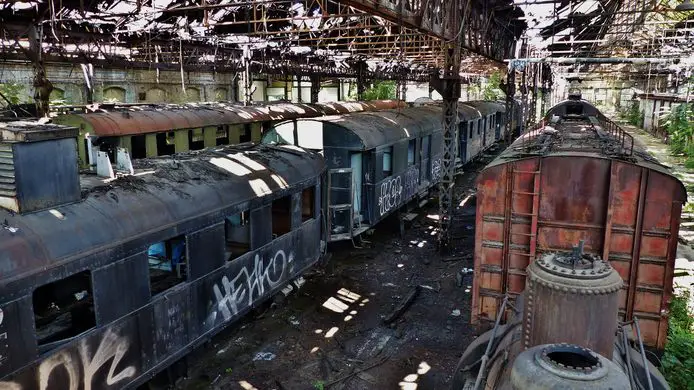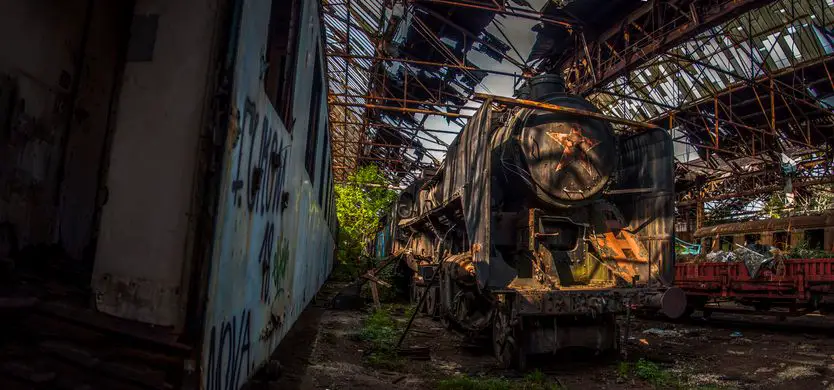The forsaken “Red Star Train Graveyard” stands as the final resting place for invaluable relics of train history.
Situated on the expansive grounds outside Budapest, the abandoned Istvántelek Train Yard, also known as the “Red Star Train Graveyard,” spans a vast area. Over 100 locomotives and train cars languish in various states of decay—some confined to deteriorating depots, others left out in the field. Among these relics lie several rare train engines, including a few cars that reportedly transported prisoners to Auschwitz during the Holocaust.

Originally constructed at the dawn of the 20th century as a repair yard for the national railway, only a few southern sections of the train yard remain operational today, with the majority left abandoned, echoing the echoes of a bygone era.
The Red Star Train Graveyard is dotted with two large depots, several smaller sheds, and open-air spaces where locomotives and railcars find their final repose. The collection spans a diverse range, encompassing both ancient and more recent specimens from Hungary’s era under the Soviet Regime. Interestingly, some of these trains were initially intended for repair and exhibition at the Budapest Railway Museum but never reached their display destination, instead lingering in the train yard.

Within this railway necropolis, there are noteworthy treasures that would quicken the pulse of any train enthusiast. Notable among them are the Hungarian MAV 424 steam engines, each weighing a substantial 137 tons, although they no longer bear the iconic red star on their fronts that gave the train yard its moniker. Another highlight is an engine from the MAV 301 series, operational between 1911 and 1914, making it one of the few remaining examples of its kind. These rusting relics offer a glimpse into Hungary’s rich railway history, frozen in time within the confines of the graveyard.

Within the train graveyard, one can discover more recent additions from the Soviet era, including engines and cars that still house rail tickets from the 1960s. The train graveyard, with its decaying engines and historical artifacts, presents a compelling alternative to the typical tourist destinations in Budapest. It beckons not only to train enthusiasts but also to those with a keen eye for history. As time marches on, the engines and cars are gradually succumbing to the forces of nature, and there’s a poignant realization that, before too long, these trains may be entirely concealed by the encroaching overgrowth of plant life. It stands as a unique and evocative testament to Hungary’s railway legacy and the passage of time.

The entrance gate to the train graveyard can be located at coordinates 47°33’12.1″N 19°06’11.0″E. However, it’s important to note that as of July 2017, there is no public access, and proper documentation is required for entry. Given its industrial nature, there may be possibilities to explore the area by sneaking in at night or on a Sunday. The northern side of the fences has lower heights that can be climbed cautiously, although it’s crucial to watch out for barbed wire.

For those attempting to enter, it is advisable to stay close to the first two northern buildings, as there is a guard post to the south, and train conductors frequent the area throughout the day. While approaching from the south is an option, it’s important to exercise caution. Stray dogs and guard dogs are known to be present near some of the southern buildings. Additionally, be mindful of avoiding venturing too far into the woods due to the presence of stray dogs and guard dogs, and beware of summer mosquitoes within the premises. Always prioritize safety and respect any restrictions in place.
RECOMMENDED: Abandoned Orient Express Train Reminds Us Of The Luxury Travel Of The Past